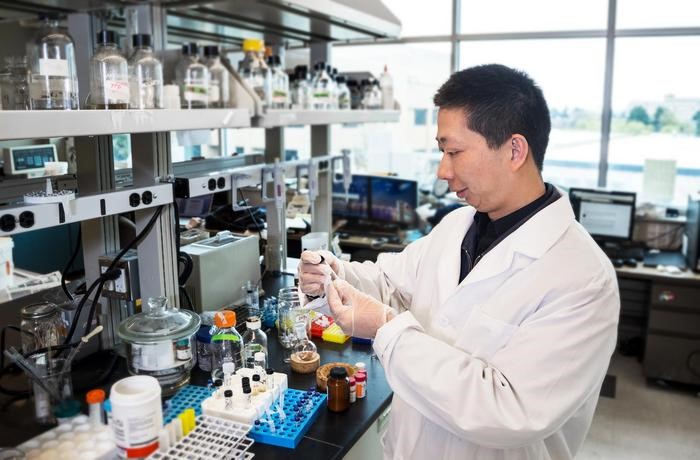Sweetening the Deal: The Power of Antioxidants through Glycosylation
Revolutionary findings reveal that the efficacy of polyphenolic compounds, commonly found in fruits and vegetables, can be significantly enhanced through a process called glycosylation, which involves combining them with sugar molecules. This groundbreaking approach has the potential to not only amplify the health benefits of polyphenols but also pave the way for the development of life-saving drugs.

Figure 1. Professor Jixun Zhan
Figure 1 shows that polyphenolic compounds, which are commonly found in fruits and vegetables, can be combined with sugar molecules to create potential life-saving drugs. Polyphenols, present in various plant-based foods, are known for their ability to protect cells from damage and prevent diseases like cancer and heart disease. However, their limited solubility in water has hindered their full utilization in promoting well-being.
In a recent publication in Biotechnology Advances, Professor Jixun Zhan, along with graduate students Jie Ren and Caleb Barton, presented an extensive review article on the engineered production of polyphenolic O-glycosides. This innovative method involves utilizing microbial fermentation to enhance the solubility and stability of polyphenolic compounds. By attaching sugar molecules through glycosylation, the researchers have successfully transformed these compounds into more water-soluble forms while preserving their potent properties.
Professor Zhan highlighted the versatility of polyphenols in developing potential medicines and health supplements, emphasizing their natural preservative characteristics and their ability to safeguard bodily tissues from harmful substances. By exploring sugar biosynthesis mechanisms and investigating enzymes involved in the process, scientists can now develop more effective glyco-drugs. The comprehensive review article by Zhan's team summarizes the various phenolic glycosides found in nature and the methodologies employed for their production.
While several techniques for producing polyphenolic glycosides in the laboratory have been established, most are still limited to small-scale applications. Future research endeavors will focus on refining production efficiency, including optimizing fermentation conditions and improving compound transportation methods.
Professor Zhan expressed optimism regarding the immense value of polyphenolic glycosides in promoting diverse health benefits. The utilization of microbes for controlled and cost-effective large-scale production holds great promise, ultimately enhancing lives through the harnessing of these invaluable compounds.
Source: Utah State University
Cite this article:
Hana M (2023), Sweetening the Deal: The Power of Antioxidants through Glycosylation, AnaTechmaz, pp.487

